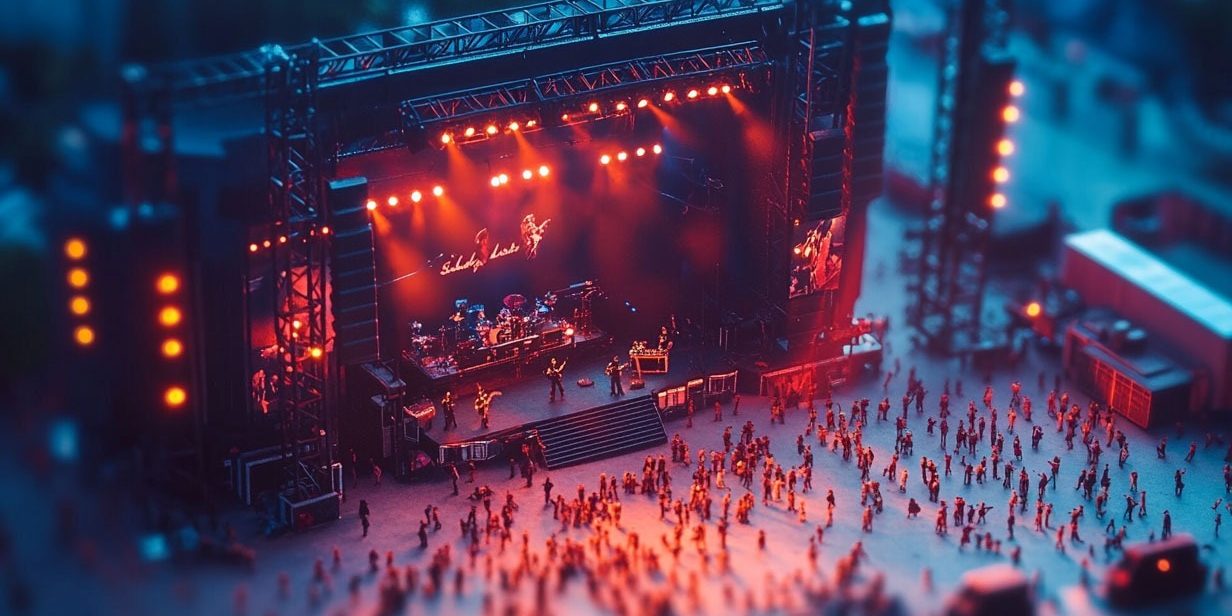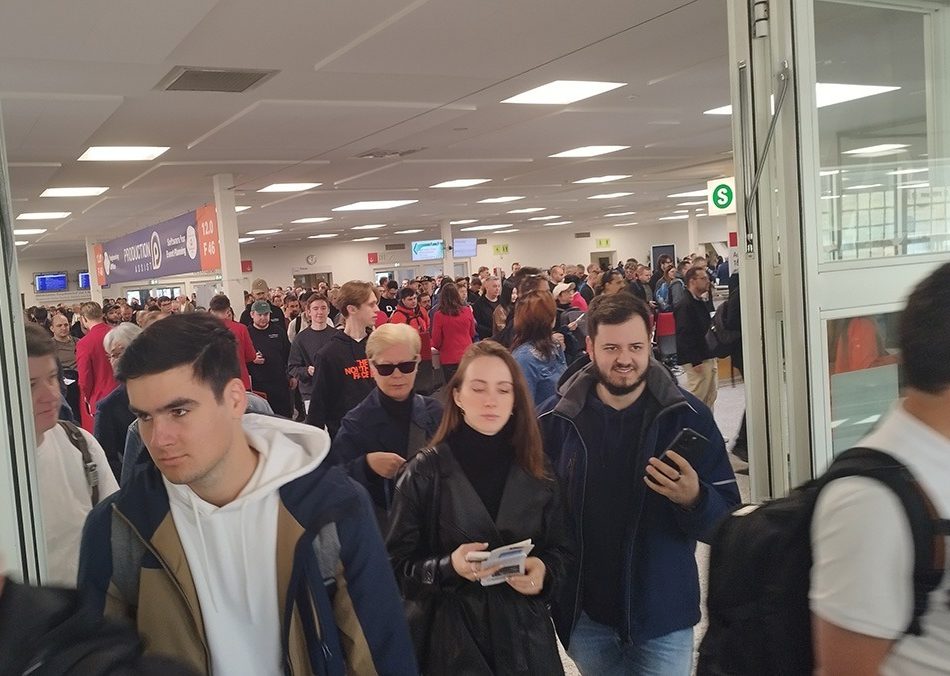Events today are complex systems. Large crowds, diverse processes and high security expectations present new challenges for event organizers and security staff. Artificial intelligence can help here by analysing data, recognizing patterns and supporting decisions. The aim is not to replace human expertise, but to complement it. Whether it’s a festival, stadium concert or trade fair: AI systems can simulate scenarios in advance and provide valuable information in real time during the event. The use of AI in event security has evolved from experimental projects to practical applications.
Typical security applications at events
Crowd monitoring and visitor management
AI-supported camera systems record movement flows and visitor numbers in real time. They recognize where crowds of people condense and how flows change. Modern systems can automatically identify
Algorithmic video analysis and anomaly detection
In addition to pure density measurement, AI can also detect unusual situations. These include sudden movement patterns, abandoned objects or unexpected gatherings of people. One example was provided by the 2024 Olympics in Paris, where France created a temporary legal basis for algorithmic video surveillance for the first time. The aim was to detect potentially dangerous situations at an early stage without using biometric identification. Operators of major events in Asia and North America are also testing similar systems to identify risks at an early stage and coordinate emergency services efficiently.
Access and weapon detection systems
Another area of application is intelligent access control. AI scanners detect dangerous objects or check tickets and access authorizations contactlessly. This can shorten queues and speed up checks. At the same time, studies show that the systems do not yet work flawlessly. False alarms or inaccurate detections can lead to uncertainty. Human control is therefore still indispensable.
Digital twins and simulations
AI offers new possibilities, particularly in the area of event planning. A digital twin is a virtual image of a real location that is continuously fed with current data. In event planning, for example, it can digitally represent stages, grandstands, routes and visitor movements. Such models can be used to run through various scenarios, such as evacuations, admission situations or bottlenecks. Operators can thus identify safety risks as early as the planning phase and optimize them in a targeted manner. The combination of data analysis and simulation is increasingly becoming a standard tool in modern crowd management.
Many of these developments tie in with findings from the security trends of the event industry in 2025 and show how AI solutions are increasingly becoming an integral part of modern security concepts.
Opportunities and benefits for event organizers
The biggest advantage of AI systems is their speed. Where camera images previously had to be analyzed manually, AI models provide indications of anomalies in fractions of a second.
Resource utilization is also improved: staff can be deployed in a more targeted manner as the system already reports signs of overload or potential conflicts.
After the event, the collected data enables a precise analysis of the visitor flow. Findings from these analyses help to make future events more efficient and safer. They also provide a valuable basis for approval processes or risk assessments for authorities and insurance companies.
Limits and risks of using AI
Despite the progress, technical and ethical questions remain. AI systems are only as good as the data they have been trained with. Poor lighting, unfavorable camera angles or weather conditions can reduce accuracy.
False alarms are also a real problem. Systems that classify rucksacks as a potential danger, for example, can lead to unnecessary interruptions.
Added to this is the perception of visitors. The use of cameras and analysis tools can create the
Legal and ethical framework conditions
EU AI Act and data protection law
The EU AI Act, which came into force in August 2024, defines which types of AI are considered high-risk and which requirements must be met. Systems for surveillance or behavior analysis in public spaces fall into a high risk category. For event organizers, this means that there are clear obligations regarding transparency, logging and human supervision. Real-time facial recognition is largely prohibited in public spaces. Data protection principles such as purpose limitation and data minimization also remain binding in the security context.
National peculiarities and international examples
France’s 2023 Olympic law served as a testing ground for the temporary use of algorithmic video surveillance. The knowledge gained from this is now being incorporated into European regulations. In Germany, event organizers rely on data protection-compliant solutions that
Ethics and social responsibility
Every technological innovation must be measured against ethical standards. AI in the security sector operates at the interface between protection and freedom. Trust is created when visitors know that their data will not be misused.
Outlook: AI security systems of the future
The trend is towards real-time capability and networked systems.
In the future, AI models could also make predictions, for example about expected visitor flows in the event of weather changes or delays in arrival traffic.
In the long term, the event industry will move towards the “smart venue“. Security and communication systems, building technology and visitor information will be networked in order to identify risks at an early stage and optimize processes.








